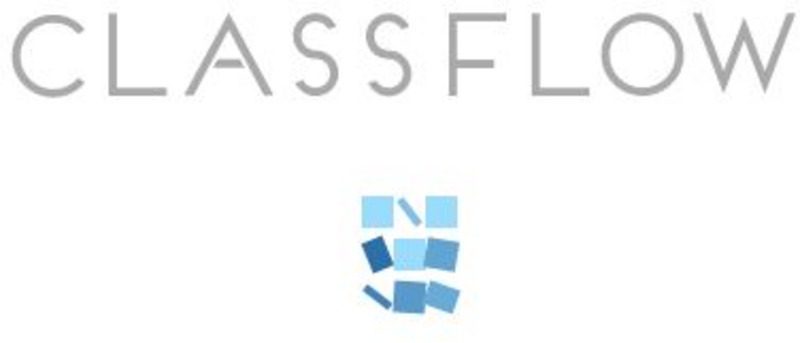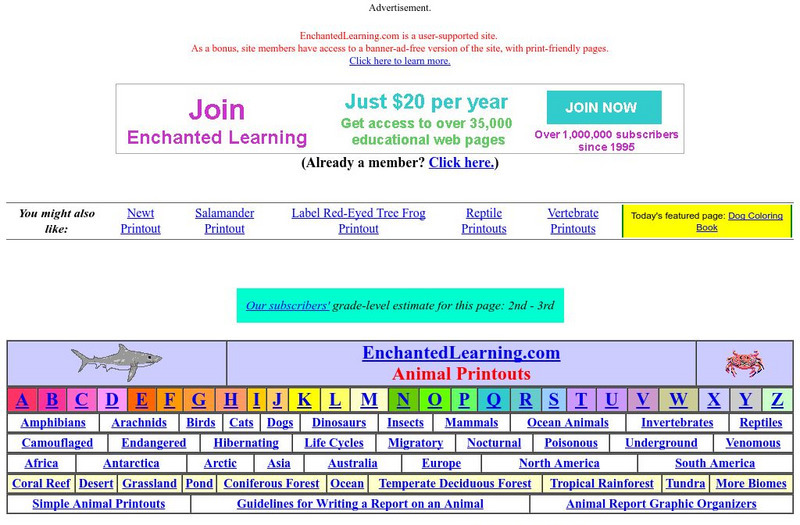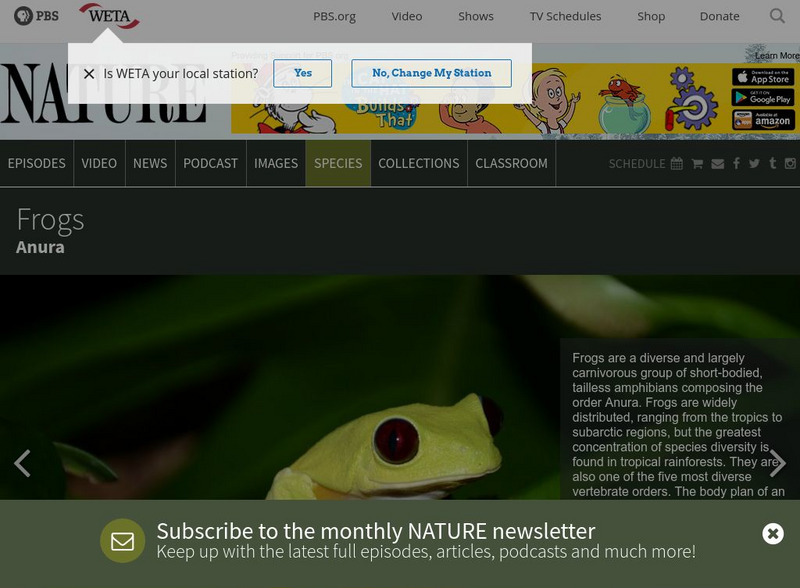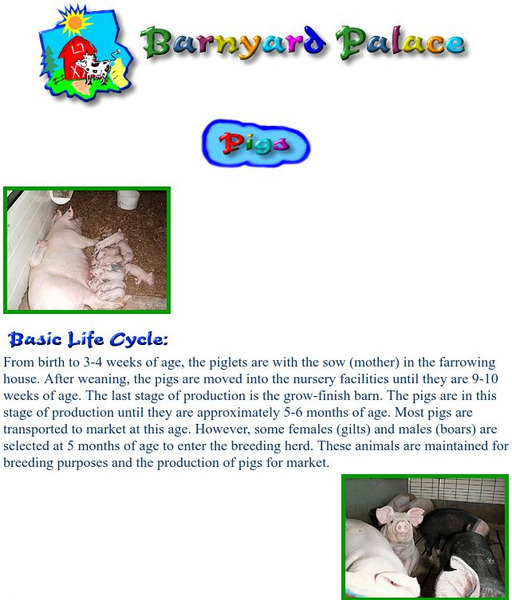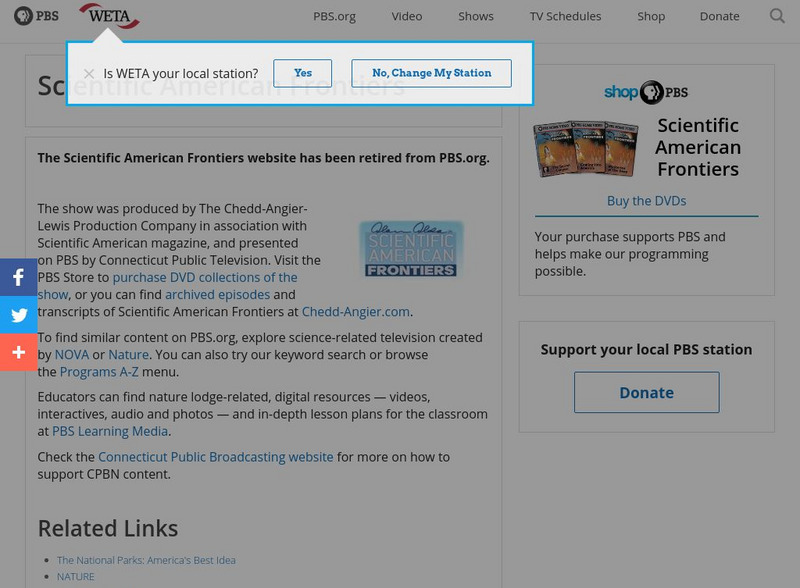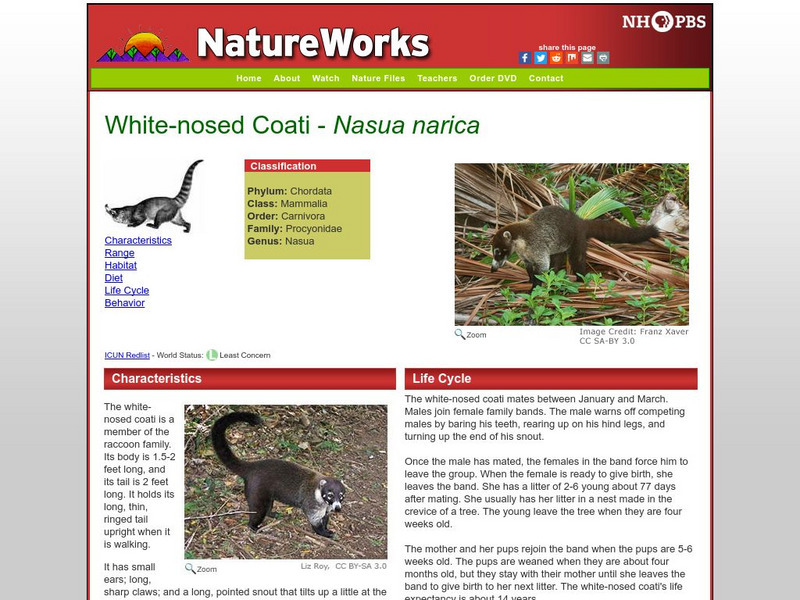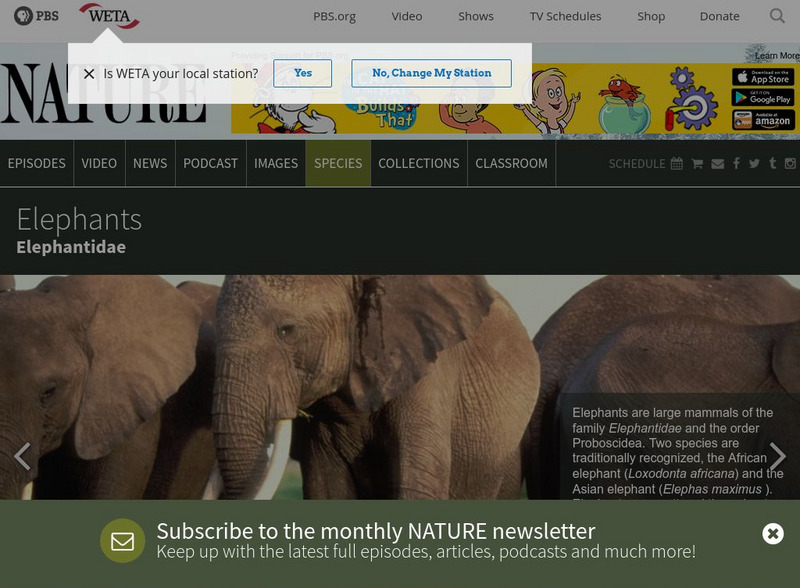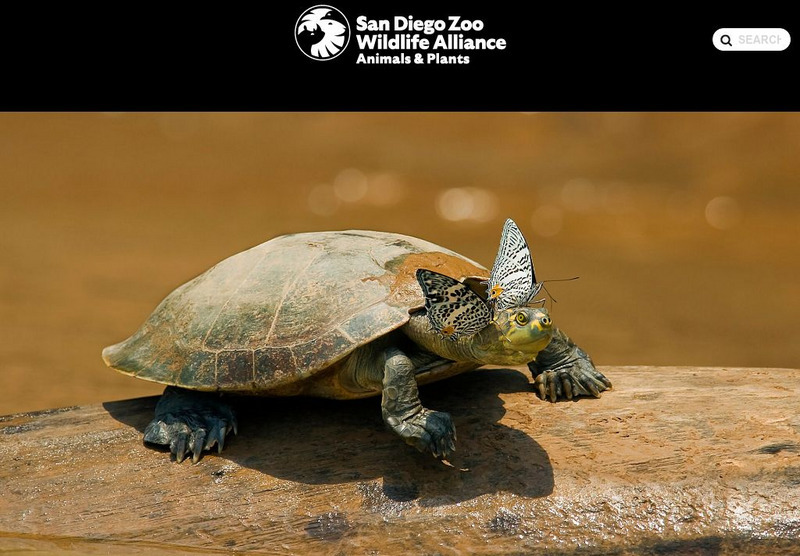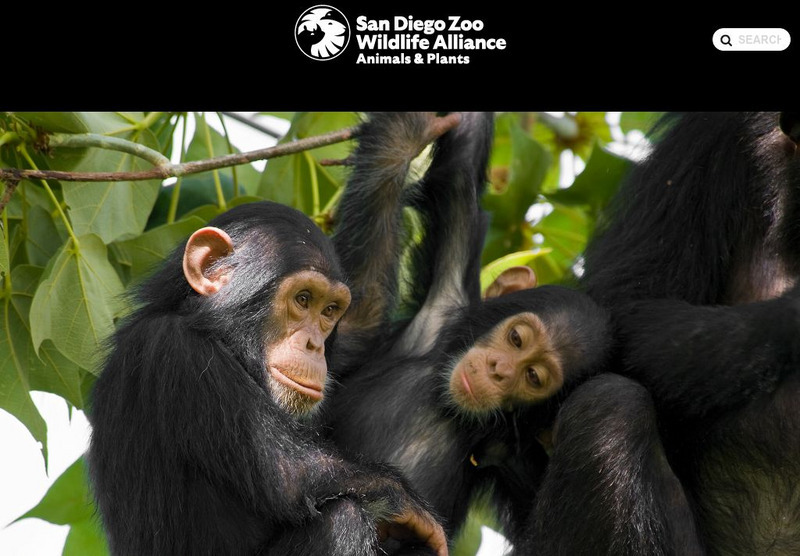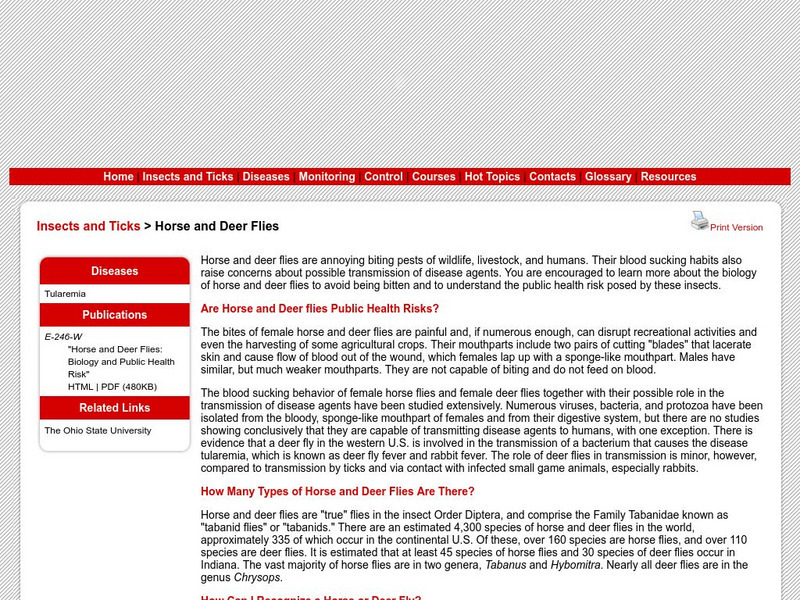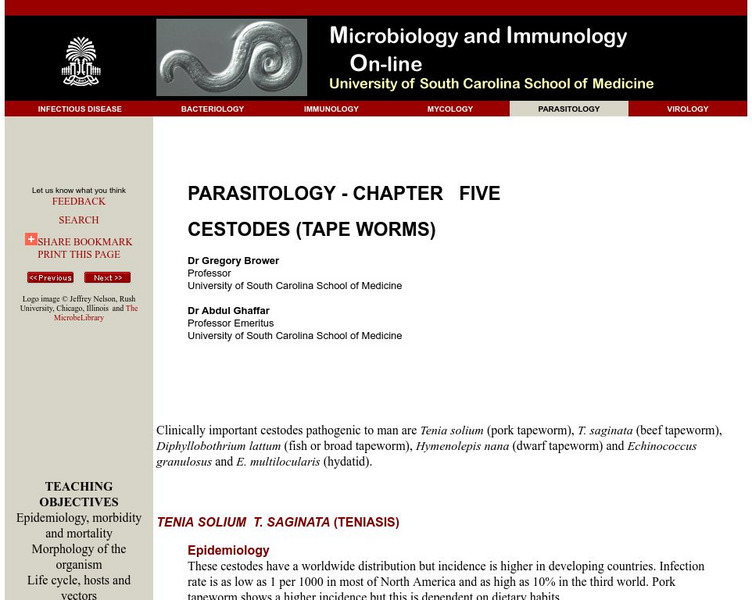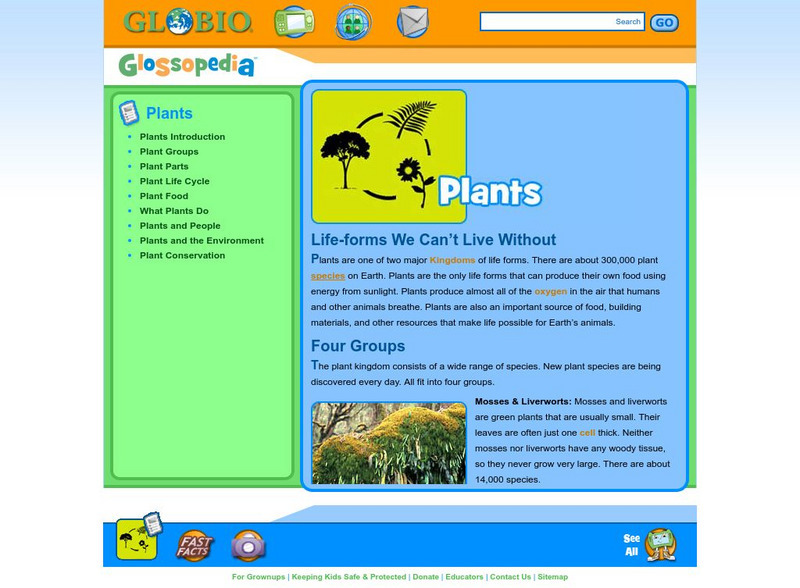Hi, what do you want to do?
ClassFlow
Class Flow: Animals: Food Chains, Characteristics, and Habitats Around the Worl
[Free Registration/Login Required] This flipchart is a great introduction to ways animals get food, characteristics of animals, habitats around the world. It contains pictures that will help students understand life cycles and where to...
Georgia State University
Georgia State University: Hyper Physics: Energy Cycle From Plants to Animals
Find out about the essential role energy plays in cell function and in sustaining life. Trace energy transformations as they pass from one living thing to another.
San Diego Zoo Global
San Diego Zoo: Elephant
This resource provides detailed information about the elephant, as well as several pictures and audio clips. [1:00]
Enchanted Learning
Enchanted Learning: Amphibians
Come and check out this awesome amphibian resource from EnchantedLearning.com. Students and teachers will benefit from the printouts found within this site. Some printouts are in different languages.
PBS
Pbs Nature: Frogs and Toads
Do you know how to tell the difference between a frog and a toad? This site provides interesting facts and information about this type of amphibian from where they live to what they eat and more.
BiologyWise
Biology Wise: Parasitic Flatworms
Describes types of flatworms that are parasitic to humans and animals and what their life cycle looks like. Two or more hosts are needed for them to complete their life cycle.
Smithsonian Institution
National Museum of Natural History: Ocean Planet
Detailed website that was a companion to a 1995 traveling exhibit of the Smithsonian. Links to lesson plans and other educational materials are at the bottom of the page. Enter the exhibition to explore the world of the ocean.
PBS
Nh Pbs: Nature Works: Polar Bears
This site created by NatureWorks focuses on the Polar Bears. The content of this resource includes a look at this species' characteristics, range, habitat, diet, behavior and life cycle.
Other
Barnyard Palace: Pigs
This is a site for the basic information on pigs. It gives you the life cycle, why they are raised, facts about their diets, the different species. Along with all that there are a few more interesting facts.
ArtsNow
Arts Now Learning: Magic Rocks [Pdf]
In this lesson, students work in groups with each acting as a predator, prey, or family member in a particular habitat. They present their habitat performance to the class and students identify the habitat and animal relationships. Then,...
Concord Consortium
Concord Consortium: Stem Resources: The Virtual Field
A virtual lab that explores how offspring inherit different traits from their parents. Investigate these traits both in animals and plants. Understand that variations in offspring can lead to traits that allow survival. Lab includes...
PBS
Pbs Teachers: Scientific American: Life's Little Questions: Can You Beat Jet Lag
Explore the human body's need for a normal cycle of dark and light and apply this to an understanding of biological clocks in other animals. Test the effect of light on the development of mealworm larvae into adults.
PBS
Pbs Learning Media: Cloud Age Two
In this video segment from Nature, Cloud, a two-year-old horse, interacts with his family in the wild. [3:23]
PBS
Nh Pbs: Nature Works: White Nosed Coati
This site features a wide range of information on the White-Nosed Coati. The content of this resource includes a look at this species' characteristics, range, habitat, food, and more.
PBS
Pbs Nature: Elephants
Did you know that the elephant is the largest animal in the world? Discover more about where they live, what they eat and how they socialize when you visit this site.
San Diego Zoo Global
San Diego Zoo: Reptiles
What is a reptile? Use this resource to understand the basic facts of all reptiles and click to detailed information on many specific types.
San Diego Zoo Global
San Diego Zoo: Turtle and Tortoise
This resource provides detailed information about turtles and tortoises, as well as several pictures and an audio clip.
San Diego Zoo Global
San Diego Zoo: Beetle
Quick facts, fun facts, interesting facts, and photo bytes are part of this comprehensive site.
San Diego Zoo Global
San Diego Zoo: Chimpanzee
This resource provides detailed information about the chimpanzee, as well as several pictures and audio clips.
Purdue University
Purdue University: Medical Entomology: Horse and Deer Flies
Horse flies and deer flies are significant pests to both humans and animals. This site describes their life cycles, feeding patterns, and some methods of controlling them.
Other
Parasitology: Chapter Five: Cestodes
An exhaustive look at numerous types of tapeworms that infect different animals. The site contains numerous pictures and life cycle diagrams. There are links to lectures and additional websites.
Globio
Glossopedia: Plants
Plants are one of the two major Kingdoms of living creatures on the Earth. They are the only beings which produce their own food. Additionally, plants are necessary for animals to live. Plant anatomy, life cycle, reproduction and the...
Saint Louis Zoo
Saint Louis Zoo: Monarch Butterfly
Learn animal facts about the appearance, behavior, life cycle, and diet of the monarch butterfly.
Canadian Museum of Nature
Canadian Museum of Nature: Peary Caribou
Get to know the Peary Caribou.. colored photos, description, life cycle, map of habitat, food. Only the basic details of this animal are given, making it a perfect site for younger researchers.
Other popular searches
- Animals and Life Cycles
- Animals Life Cycle Pictures
- Animals Life Stages
- Desert Animals Life Cycle
- Animals Life Cycles
- Plants and Animals Life Cycles





